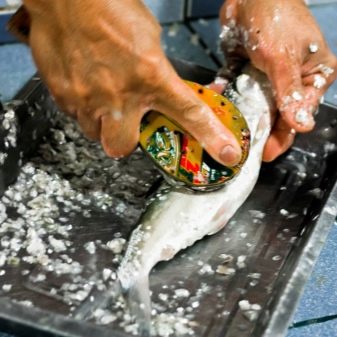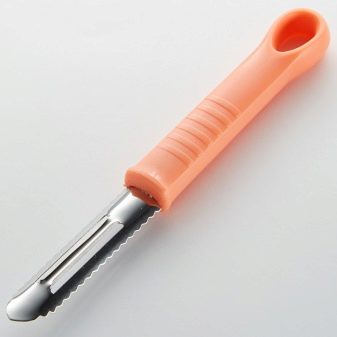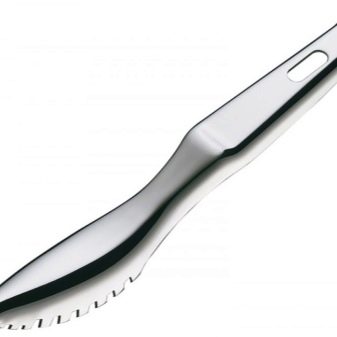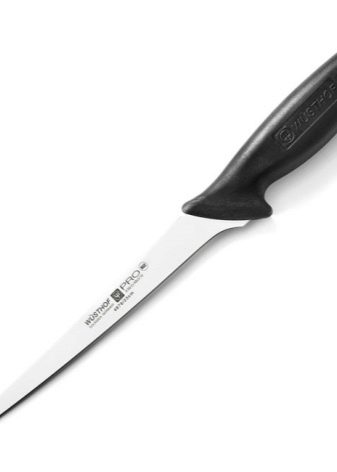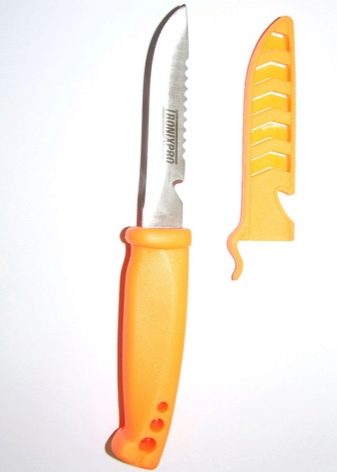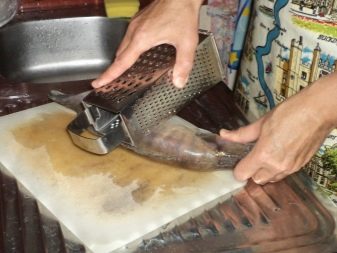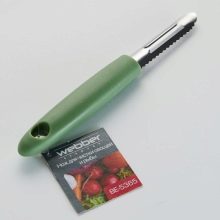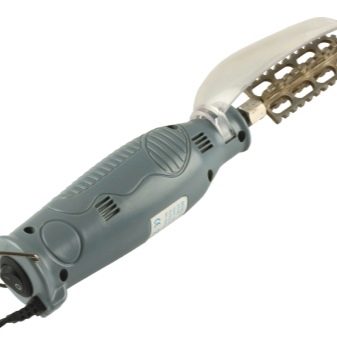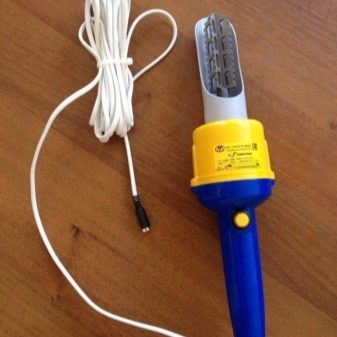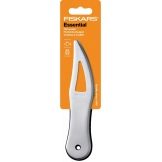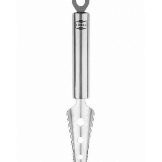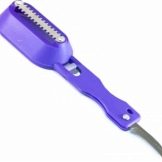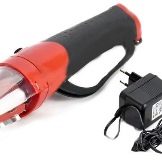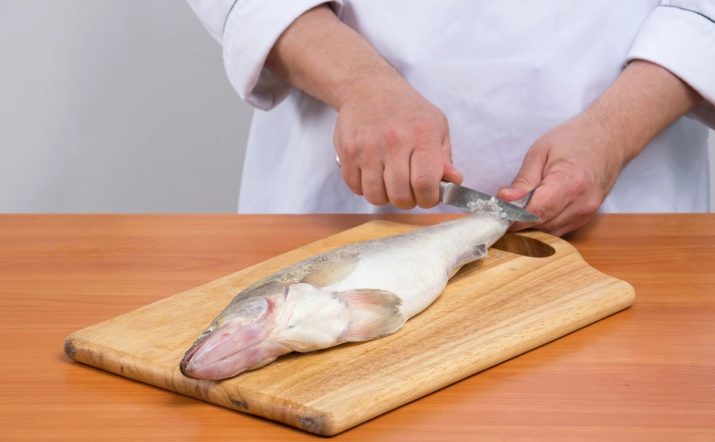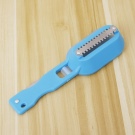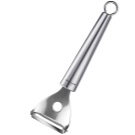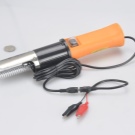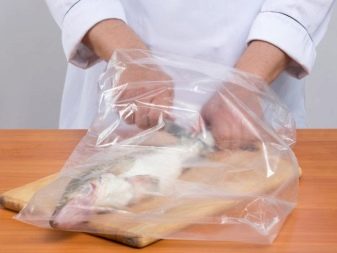Knives for cleaning fish: types, review of manufacturers, selection and use

It has been repeatedly proved that fish is useful and must necessarily be included in the diet of a person of any age. So that such meals are not fed up, the fish must be diverse. Not all types of fish are equally popular. Increasingly, the choice is given in favor of those whose cleaning will be more simple. To avoid such a problem, you just need the right inventory and a couple of good tips.
Features
First you need to understand that What exactly scares ordinary people in the process of preparing and cleaning fish:
- firstly, not everyone knows how to properly clean the fish, while spending on this a minimum of time and effort;
- secondly, not all people like the effects in the form of dirty splashes, spreading scales and smell.
To facilitate the task, you need to stock up on a good knife. Of course, everything depends on the skill and experience, but such a knife should be:
- tough (so as not to spring when moving);
- moderately long and wide (for convenience of work);
- with a comfortable handle (smooth but non-slip);
- resistant to corrosion (preferably made of high quality stainless steel);
- with the right sharpening.
Sharpening should not be too sharp, so as not to damage the skin. If the appearance in the final platter is not important, the scales can be removed with the skin. In most cases, the blade will be serrated or wavy. The teeth can be the same or alternate with different sizes.
Do not confuse knives for cleaning scales and cutting of the carcass (sirloin). The latter, as a rule, longer, thin and narrow. There are universal models, one side of which is with sharp sharpening, and the second - with blunt or jagged. But they are less convenient for permanent use. Such knives are also called tourist.
Usually in the set of knives or among the accumulated houses you can choose the appropriate option.which can serve for temporary use. In addition, scales for cleaning scales are often called all devices that perform this function (even unlike the knife in its usual form). Such devices consist of a handle and a working part of different shapes.
If there are no special tools at hand, you can use the blunt side of any existing knife, spoon, fork, or even grater.
Kinds
All knives for cleaning fish can be divided into manual and electric. The manual options are the following.
- Ordinary knives in the form that is most familiar to us when the blade and the handle are in the same plane. On universal knives, you can often see the grooves - to prevent splashing. Some models have a hook for ripping the abdomen. To remove the scales also fit the blade with the so-called serrayitor sharpening.
- Knives scrapers. The essence of their work - in the presence of toothed planes, with which you can gently grab and scrape off the scales. Such scrapers can be straight or curved. The teeth may be located around the perimeter, from one edge or in several rows, depending on the model.
- Knives with containers. Peelers with a metal blade and a tank with a lid in the upper part (where the scales are going) resemble their appearance.
Electric models of knife for cleaning scales are more practical. Depending on the model and manufacturer, specifications may vary slightly. The advantages of such a device:
- strong, reliable working (moving) part;
- waterproof case with anti-slip coating;
- high power with low noise level;
- the presence of a visor or container limiting the spread of spray and debris;
- small weight;
- additional batteries for work without access to the network (for example, in nature);
- ease of washing and easy storage.
Manufacturers Overview
It is believed that proven manufacturers are a guarantee of good quality. This statement is rather controversial, because each product has its own positive and negative sides. To make it clearer, let's look at a few examples.
- Fiskars essential - fish knife from high-quality stainless steel, which does not change its properties even over time. The Finnish manufacturing company gives a guarantee of service for five years. The special shape of the blade is designed for the most effective and quick cleaning of fish from scales. The convenient handle facilitates work.
- Borner toronto - made entirely of food steel, which can safely and safely come into contact with fish. The handle does not slide, there is a ring for hanging. On the working part there are teeth on both sides, which will allow to clean absolutely any fish.
- Fissman - well proven fish cleaning knife, the hallmark of which was the built-in container for the remaining scales. In this model, only the blade is made of metal, which copes well with its task. On the back of the handle, an additional blade is ejected for gutting. Most of the complaints cause damage to the case and handles, which are made of plastic and do not always withstand intensive work. For hostesses, a bright design will be a pleasant addition.
- VES Electric 4000 - electric knife for cleaning fish. Quite a powerful device with good performance. It has a small weight, it is convenient to hold it in your hand. Easily washes and understands, conforms to all hygienic requirements. There is a protective container for collecting waste. Can be used remotely from the network, there is a charging indicator. Appearance is quite pleasant.
Subtleties of choice
In order for cooking to deliver only pleasant emotions, all kitchen utensils must be chosen wisely. Many factors can influence the choice of a knife for cleaning fish - these are some of them.
- The convenience of the knife is of great importance, especially if you have to clean the fish often. First of all it concerns the shape of the handle and the total weight of the product.
- The devices checked by time trustworthy. However, you should not be limited to them only - in the new models the previous experience is combined with innovations.
- Among the materials from which such kitchen utensils are made, high-quality stainless steel is most preferable. It has the longest service life, while it does not oxidize and does not give the product any flavor. For the manufacture of handles often use wood or plastic. Wooden parts are less hygienic, although more pleasant to the touch. Plastic is inferior to the above materials for durability, but such a product will be easier and cheaper than all-metal.
- Now on the market you can find a lot of fakes that imitate knives of famous manufacturers. Poor kitchen utensils not only affect the quality of cleaning, but also can lead to injuries. Therefore, if you doubt the knife, it is better to turn to proven brands.
- Universal options designed both for cleaning and for filing are not always convenient in both cases. If funds permit, it is better to purchase two separate knives. Large fish dressing kits are also useless. In addition to the scraper and filet knife, only scissors are usually needed.
- If you regularly have to clean a large number of fish, it is wiser to purchase an electric fish scaler. With her time for such manipulations will be reduced several times.
These devices have a fairly large range of prices, and the cost almost always pays off with the convenience and speed of cleaning.
Terms of use
Even the best knife will not be able to rectify the situation if the person who works for them has no experience. In order for the result to be good, you must follow certain recommendations for cleaning fish.
- It is better if the fish will be fixed. For this you can use a board with a clip. If the knife does not have a protective screen or container, the carcass can be placed in a wide plastic bag so that the movements are not constrained. You can also get rid of scattering scales, if you carry out cleaning in water.
- Mucus can be washed away as needed under running water. To keep the fish from slippery, use salt.
- The fins are often sharp, so they are removed first. It is better to carry out all work in gloves.
- Dry scales require great effort. If it is difficult to cope with it, you need to soak the carcass in water or pour boiling water over it. In particularly difficult cases, the scales can be removed from the skin.
- After preparation, the carcass should be placed tail to itself. The scraper should move from the tail to the head.
- In order to make the removal of scales less troublesome, it is better to clean the fish directly in the place of catch or on the street - then cleaning in the kitchen is definitely not needed.
- All surfaces and tools that come into contact with fish need additional hygiene. In addition to household chemicals, you can use soda, vinegar and lemon juice. They will also help get rid of the characteristic fish smell.
Next, watch the video review of the knife for cleaning fish.



